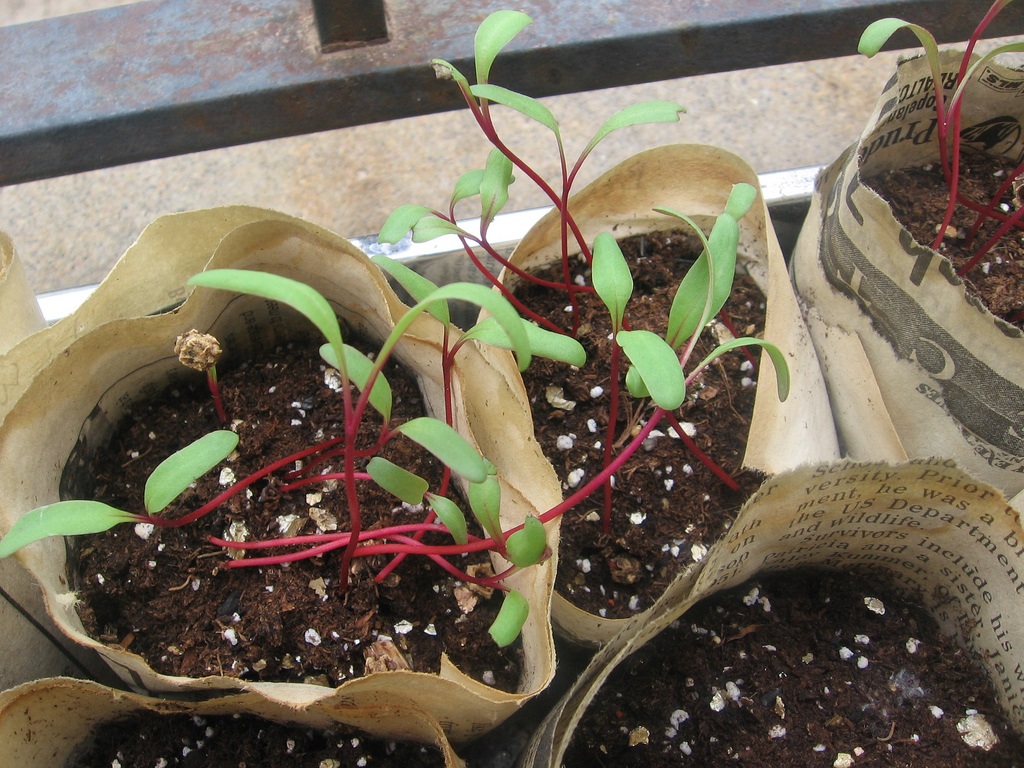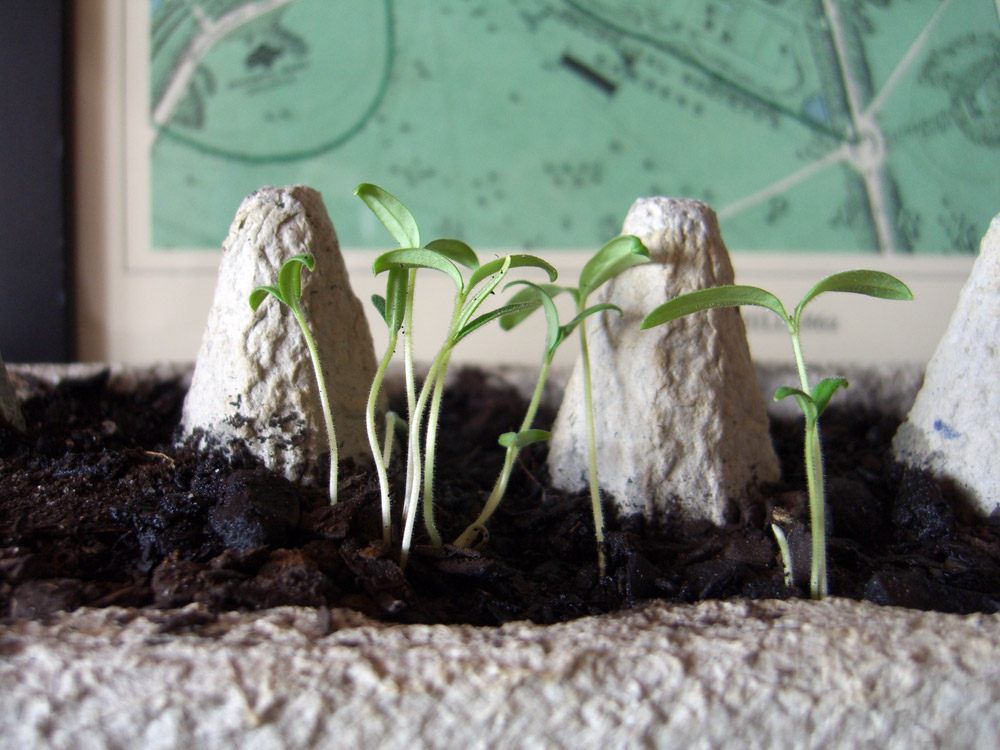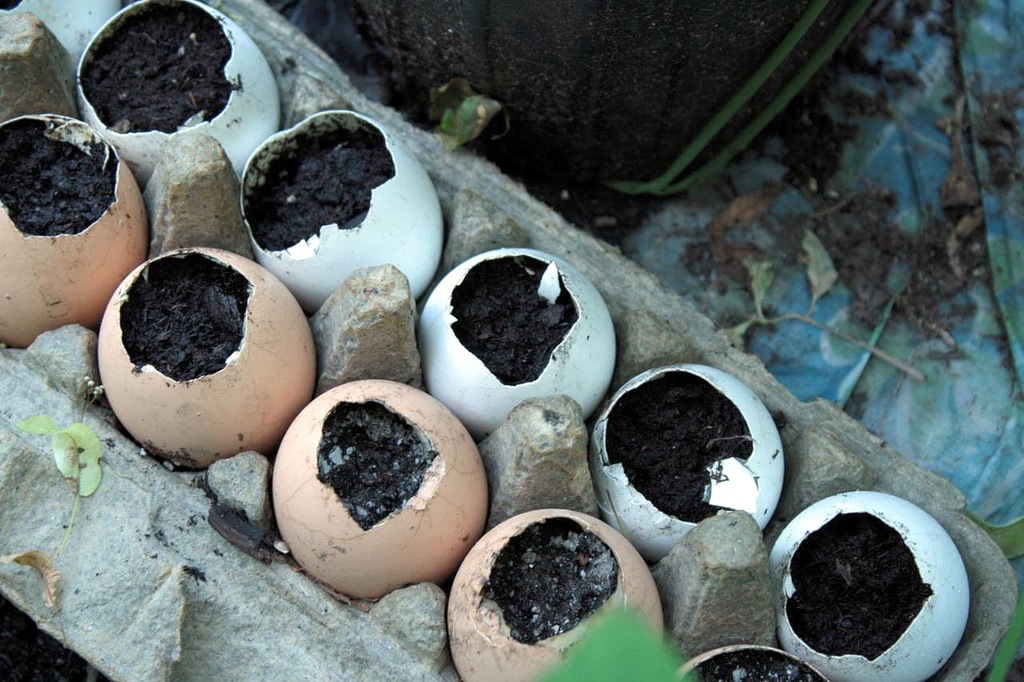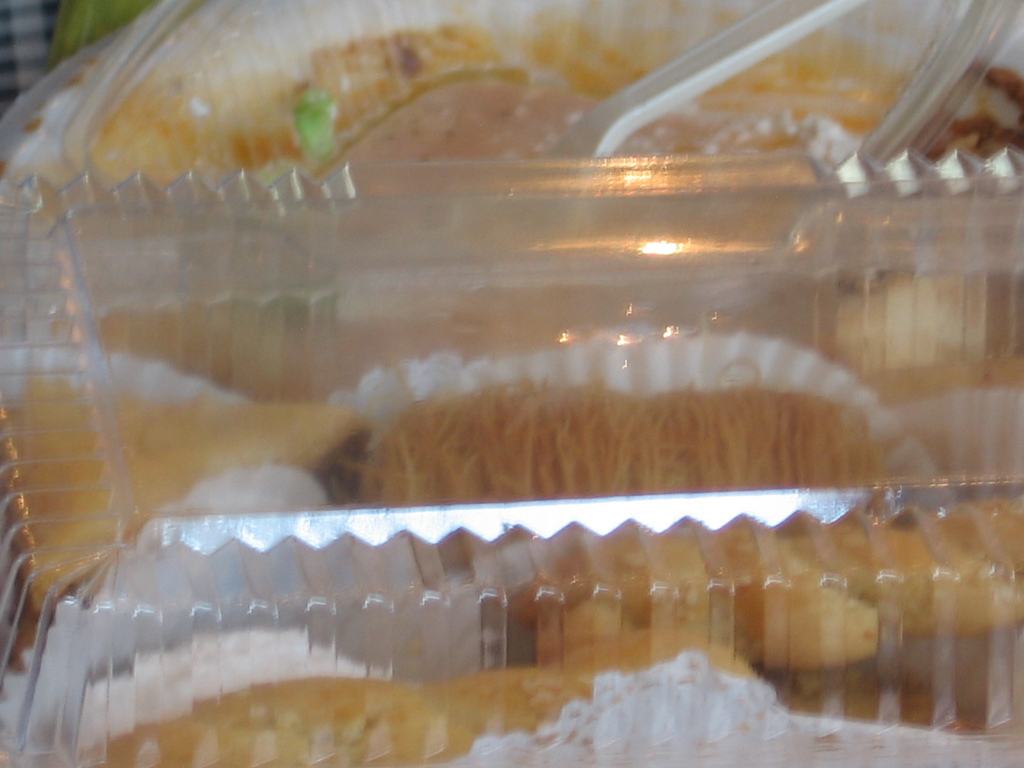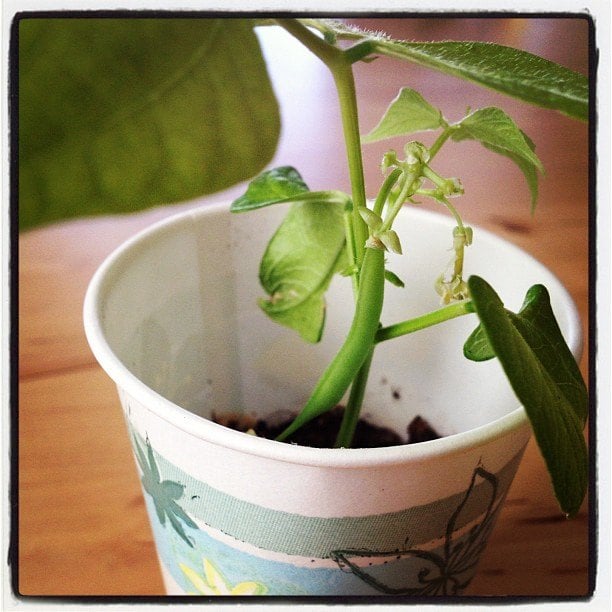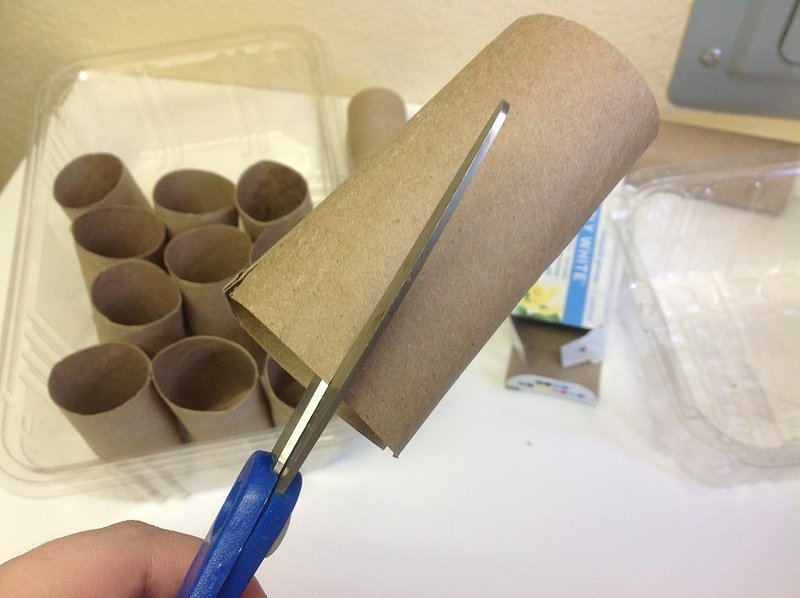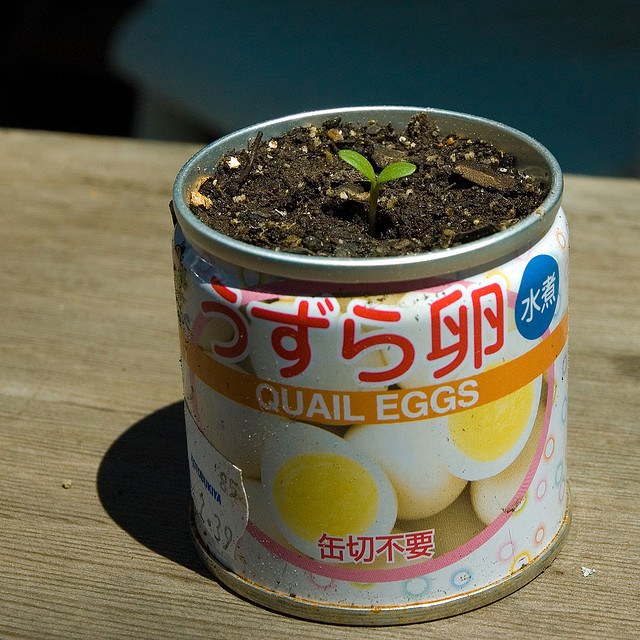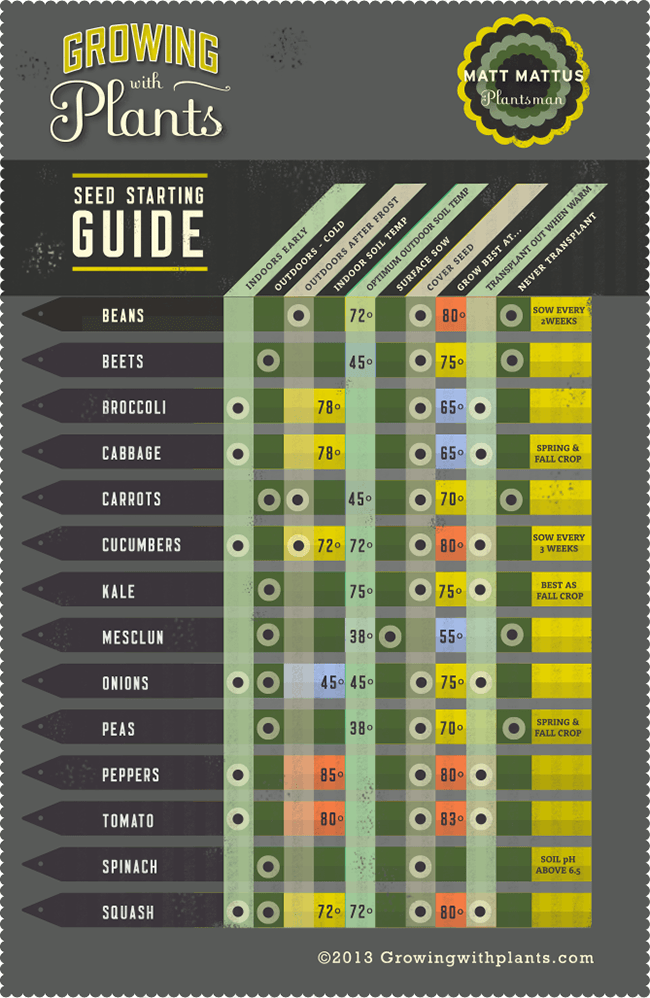Those of us in the northern hemisphere who are fairly green-thumbed and happiest when digging in the dirt have probably begun to plan this year’s garden by now: sketches have been made, seeds have likely already been ordered, and although the soil will still be too cold to plant in directly for another 8 weeks or so, we can get a head start on our veggies and herbs by starting our seeds indoors. There’s no need to go overboard and spend a fortune on fancy starter kits or designer seed starting pots; all that’s needed is some potting soil, seeds, and whatever you may have lying around the house.
1. Folded Newspapers
This is one of the most eco-friendly started pots imaginable: newspapers can be found pretty much everywhere, and a few simple folds are all that’s needed to create perfect little pockets for nurturing your seeds. Once folded, fill the pots with soil, pop in your seed(s), water, and place in a sunny spot.
2. Cardboard Egg Cartons
One of the most common ways to grow seedlings is to use a cardboard egg container. Just fill each individual egg cup with soil, drop a seed or two into each section, and water. You just have to make sure to keep these well-watered, as the cardboard tends to suck up a great deal of moisture over the course of the day, and dry soil = dried-out seedlings.
3. Egg Shells
After you’ve cracked an egg or two open for your favourite omelette, don’t compost or throw them out immediately! If you’ve broken them in such a way that the shells are mostly intact (like, if you’ve just peeled the tops off for a soft-cooked egg breakfast), just wash them gently with soap and water and let them dry. Fill them with soil, pop a couple of seeds into each one, tuck them back into their carton(s), and water them well. You won’t have to remove the shells to transplant the seedlings; just crack the bottoms open for the roots to grow out from the bottoms.
4. Jars
Empty baby food jars are ideal for this purpose, but any clean glass jar will do. Once you’ve used all of the contents, wash the jar thoroughly with dish soap and water, and be sure to rinse it well. Let it dry completely. Pour a bit of gravel or some small pebbles into the bottom, and then fill with potting soil.
5. Mini Yoghurt Cups
Those individual yoghurt containers aren’t just perfect little snacks when you’re on the go: they’re ideal for growing individual plants that need a bit of extra root-room. Use them to start sunflower seeds and beans, or herbs such as mint, cilantro, or parsley. If you plan to grow plants in them and not transplant them (like in a miniature windowsill herb garden), then poke holes in the bottoms for drainage and add a few pebbles before you pour in the soil.
6. Pastry Containers
You know those plastic take-out containers with the little pop-slots? Pastries such as croissants, danishes, and such usually come in them, and they just end up being disposed of as soon as the last crumbs have been licked from the bottoms. These containers are perfect miniature greenhouses: fill the bottom portion with soil, plant your seeds, and then just pop the top closed in between waterings: it’ll create a warm, safe, humid environment for your little seeds to flourish.
7. Paper Cups
Unless you’re dragging a reusable cup with you every time you go to a cafe, chances are that each take-out coffee you purchase is served in a paper cup. I like to hope that you’ve been recycling these, but aside from turning them into mulch, you can also use them as planters. Larger cups are great for growing herbs on a windowsill, while smaller ones (like espresso cups) are better for things like tomato seedlings that you’ll be transplanting once the weather warms up. (These are ideal for kids to plant beans in: they sprout so quickly that the kids remain interested, and they can eat the green beans when they grow!)
8. Cardboard Toilet Paper Rolls
This one might sound a bit weird, but it actually works: take a toilet paper roll and make a few long vertical cuts into one end, then fold them inwards to create a cup. Fill that with soil, add seeds, water, and you’ll have plants in no time.
9. Juice Cartons
Slice the spout tops off, fill with soil and a few seeds, add water and sunlight, and poof! Seedlings. This one is best for those that grow quickly, but will need to be transplanted once they’re about 6 inches tall, like beans, tomatoes, and peppers.
10. Cans
Strong and sturdy, empty cans are ideal for starting all kinds of seeds. Empty tomato paste cans are great for individual ones, while larger cans like 28oz soup cans are great for mixed lettuces and such. If you want to be cheeky, you can use empty bean cans to grow your bean seedlings, tomato cans for tomato plants, etc.
Try to use heirloom, organic seeds whenever possible, and never spray toxic chemicals into your garden! If you feel the need to fertilize your plants, use organic compost, ground eggshells, or “compost tea”. Save your seeds when they’re ready to be harvested, and you’ll be able to grow your own food for years to come.

